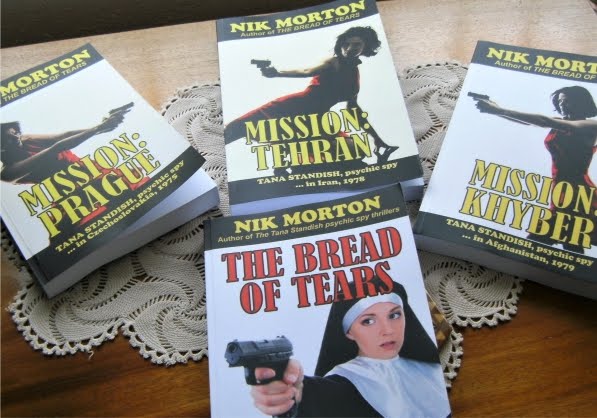This 95-page appraisal of the
classic 1939 John Wayne/John Ford film (published in 1992) is written by Edward
Buscombe, who is also the editor of The BFI
Companion to the Western.
Seven of producer Walter Wanger’s
pictures for United Artists hadn’t made a profit. So Wanger was told to rein
back his budgets. Ford’s project to film ‘Stage to Lordsburg’ appealed: ‘a
talented, tested and prestigious director, relatively unknown and therefore
inexpensive stars and a type of story which, even if Westerns were not
fashionable, was nevertheless of proven appeal.’ (p17).
The filming lasted about two
months. But due to Wanger’s financial situation, UA wouldn’t agree to filming
in colour, which was a great shame, considering the spectacular vistas
presented by Monument Valley. At that time colour added about 30% to production
costs. The film came in under budget, costing about $531,000. The salaries of some
of the picture’s stars were Claire Trevor, $15,000; Andy Devine, $10,000; Thomas
Mitchell, $12,000 (and he won an Oscar for the part too!); John Wayne, $3,700,
considerably less than four other travellers in the stagecoach! (p18)
Essentially there are two
narrative strands to the plot: first, a journey through dangerous terrain, echoing
The Odyssey; second, revenge, which
is as ancient as the Greek myth. The latter is ‘driven by the hero’s sense of
personal honour, an inner compulsion rather than an external threat.’ (p25) And
the theme emphasises that good prevails over evil.
One of the reasons for the
film being a classic is the canny juxtaposition of the nine travellers in the
stagecoach, and how they rub against each other, revealing their characters. The
driver Buck, the whiskey drummer, Peacock, meek in character and temperament (played
by Donald Meek), the Southern gambler Hatfield who is not quite the gentleman
he likes to think he is, the disdainful and felonious banker Gatewood who is
anxious to abscond, the wan wilting flower of womanhood, Lucy, keen to join her
cavalry officer husband, well-oiled Doc Boone, evicted from the town for
drunkenness and not paying his rent, escaped jailbird Ringo Kid, joining the
coach a short way outside town, shotgun rider Sheriff Wilcox (who promptly arrests
Ringo), and Dallas (who ‘is never actually named as a prostitute, but only the
young and innocent Ringo does not instantly recognise her profession’[p37]).
Between the lines, Ford
reveals that ‘respectability and morality are very far from being the same
thing.’ (p37)
Needless to say, screenwriter
Dudley Nichols had to considerably enlarge upon the original short story. Lucy,
the army wife, is not pregnant in the story; Nichols’s injection of her gravid
state and the subsequent birth seem ‘expressly designed to give the film appeal
to a more mixed audience.’ (p54)
Due recognition is also given
to stuntman Yakima Canutt: ‘his contribution to the film was considerable,’ with examples. (p67)
Interestingly, Orson Welles
confessed he learned to be a director by watching John Ford’s films: ‘John Ford
was my teacher. My own style has nothing to do with his, but Stagecoach was my movie text-book. I ran
it over forty times.’ (p58)
The book concludes with
details about the press releases, the film’s overwhelmingly positive reception, and John Ford’s
subsequent career and status. Throughout, the pages are interspersed with
black-and-white stills.
An excellent insight into a
piece of cinematic history.
There are many other BFI Classic books available; check them out on Amazon – search for ‘BFI Classics’
* BFI = British Film Institute

























